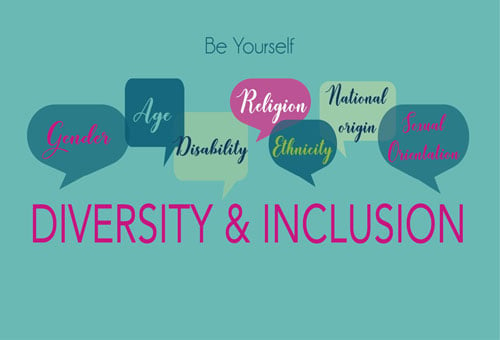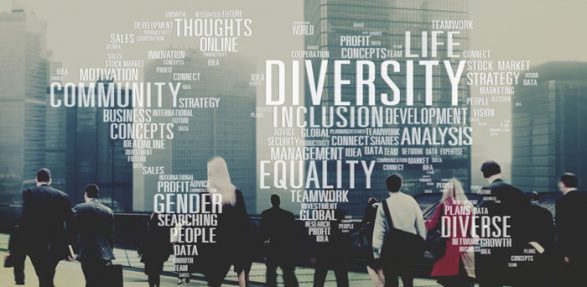- in Blog , Human Resources by David Wilkinson
An evidence-based framework for developing inclusion in the workplace

Developing inclusion in the workplace is a much wider issue than just developing and publishing a series of policies. A new study looking at the research into inclusion in the workplace best practice has produced a very useful research and evidence-based framework for promoting inclusion in the workplace.
- Inclusion in the workplace
- 6 ways of developing inclusion in the workplace
- Conclusion and takeaways
- Reference
Inclusion in the workplace
The basic premise of inclusion in the workplace is to ensure that no one feels alienated, excluded or ostracised because of their age, disability, social background, gender, race, religion, sexual orientation, pregnancy or other any other factor. The intention is to provide protection so that people can ultimately be themselves at work.
The research
The team of researchers from Antai College of Economics and Management, at Shanghai Jiao Tong University, in Shanghai, China were building a multi-level theoretical model of organisational inclusion from a meta-analysis of previous research findings. Whilst the study at hand is situated in China and some of the issues found are very much rooted in the Chinese culture, the actual study is at the same time useful, interesting and has implications for workplaces around the world.
The research found that there are 6 different ways of promoting and developing inclusion in the workplace:
Be impressively well-informed
Get your FREE organizational and people development research briefings, infographics, video research briefings, a free copy of The Oxford Review and more...
6 ways of developing inclusion in the workplace
-
Policies
- Inclusion policies should include aspects of both including and tolerating –This is founded on the Chinese words for inclusiveness and tolerance: ‘Bao’ and ‘Rong’ (包容).
- ‘Bao’ essentially means the inclusion of everyone and everything.
- ‘Rong’ is tolerance and forgiveness. This engenders flexibility in the organisation when someone does something slightly off form.
- Having inclusive policies and practices helps to create an inclusive climate in an organisation. The study found that having good inclusion policies and officially promoting inclusion tends to be a driver to developing a more inclusive climate.
- The organisational climate creates the conditions for the polices to turn into increased participation. Where an organisational climate embraces and even celebrates diversity, those who are from diverse groups tend to be more comfortable and consequently tend to participate more in wider in-group activities. Where the climate is exclusive and exclusionary the opposite tends to occur.
-
Values fit –
The person-organisation values fit is positively related to employees’ feelings of inclusion. Person – organisation values is a concept where both employees’ and the organisation’s values must sit together in harmony. The closer the values of the organisation are to those of the employees, the more likely it is that employees of any background will feel included and valued.
-
Network diversity –
Network heterogeneity of employees is positively related to inclusion. This refers to the personal and professional networks of the employees. London is famously one of the most ethnically diverse cities in the world and in many cases, children and young people will mingle with a lot of other cultures. Let the same child grow up in a market town in Gloucestershire and they will have a lower network heterogeneity. The minority ethnic child in London will have a greater network heterogeneity and will feel more included than the minority ethnic child in the Gloucestershire market town
-
Diversity range –
The larger the cohort of employees of diverse backgrounds in the organisation, the greater the level of inclusion. The greater the range and numbers of people from diverse backgrounds the greater the feeling of inclusion there will be amongst people of diverse backgrounds.
-
Inclusive leadership –
Inclusive leadership promotes inclusion. Inclusive leadership positively affects feelings of inclusion of employees of diverse backgrounds. Leadership is an essential success factor in developing an inclusive workplace. Leaders need to be aware of this.
-
Inclusion and performance –
- Feelings of inclusion increase both in-role and extra-role performance In-role refers to the work in the job description. Extra-role are the activities to do with the organisation that comes with working there. This could be courses or simply having lunch with others. Both in- and extra-role performance are increased when people feel included and, conversely, performance tends to suffer when people feel excluded.
- Feelings of inclusion are positively related to psychological outcomes such as job satisfaction and organisational commitment. There tend to be higher employee turnover rates where people feel excluded, marginalised or ignored.
Conclusion and takeaways
Whilst polices are essential for inclusion in the workplace there is a lot more to developing genuine inclusion in the workplace. These six pointers form a useful frame of reference thinking about or trying to develop greater inclusion in the workplace. In particular focusing on what creates a sense or feeling of inclusion rather than some of the more sterile organisational attempts of ticking the inclusion box can make a huge difference in actually achieving a deeper execution of inclusion whilst also focusing on performance.
Reference – available to members
Be impressively well informed

Get the very latest research intelligence briefings, video research briefings, infographics and more sent direct to you as they are published
Be the most impressively well-informed and up-to-date person around...


